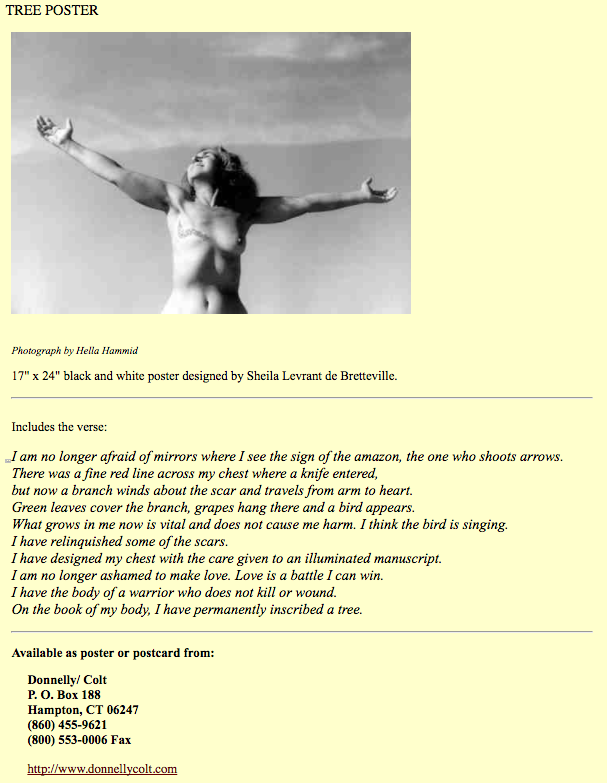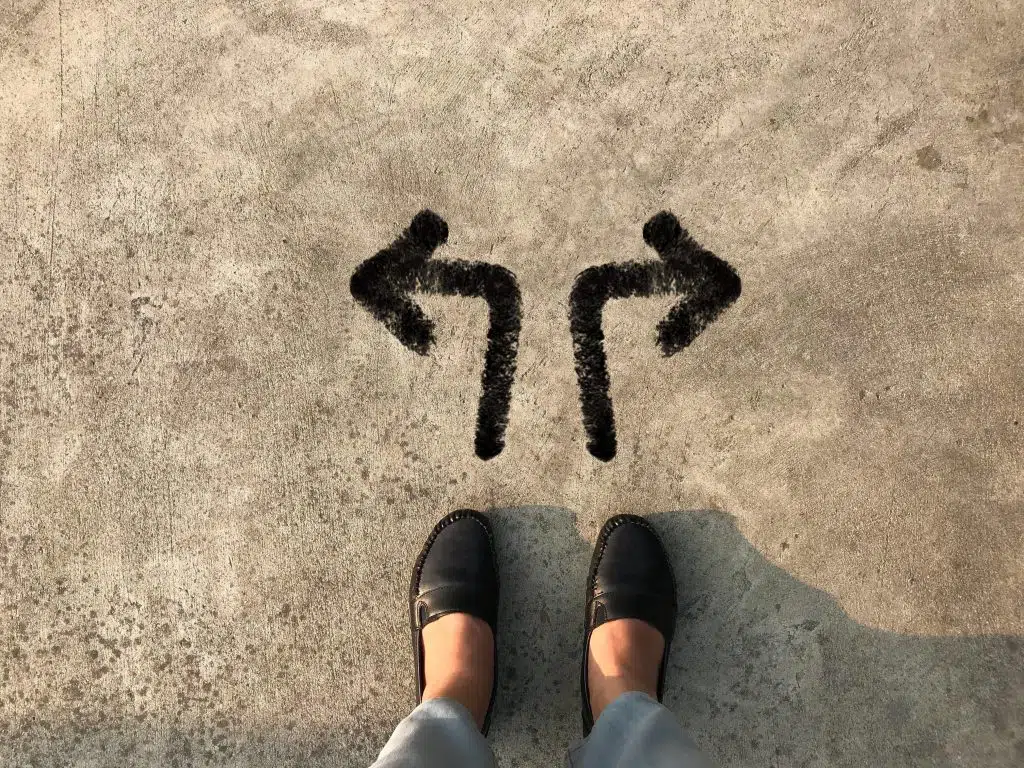Note: This is part 2 of a 3-part series related to our recent XRAY review on Roni Caryn Rabin’s New York Times piece, “‘Going Flat’ After Breast Cancer.” FORCE volunteer, Robin Karlin discusses her decisions after mastectomy in part 1 of the series.
by Sue Friedman
 In 1997, I was diagnosed with breast cancer at age 33. Back then, there were few resources for young women to find support and information. In fact, my experiences with navigating hereditary cancer decision-making played a big role in my decision to start FORCE.
In 1997, I was diagnosed with breast cancer at age 33. Back then, there were few resources for young women to find support and information. In fact, my experiences with navigating hereditary cancer decision-making played a big role in my decision to start FORCE.
Images of feminism and survival
In college, where I was introduced to feminism, a powerful feminist poster left a lasting impression on me. Author and breast cancer survivor, Deena Metzger poses topless. Her arms flung wide, her unreconstructed chest displays a beautiful tattoo of a tree, accompanied by the words from her powerful poem, “Tree.” Before breast cancer ever entered my life, this poster embodied my concept of survivorship.
Ideology and personal decisions
Throughout my hereditary cancer experience, I had to make many medical decisions. I based most of these decisions—like having genetic testing and undergoing risk-reducing salpingo-oophorectomy—on scientific information and research. But the decision about reconstruction felt more personal. I found few resources to help inform my decision. I didn’t know another living soul who had faced cancer. My one image of mastectomy was the poster from my college days.
Like Robin, I felt an emotional pull towards no reconstruction, using my body to make a strong ideological statement. As a mom, it felt selfish to undergo a surgery with a longer recovery time that took me from my toddler son. On the other hand, I felt a strong need to reject any image that would be a daily reminder of my diagnosis of cancer.
Ultimately it was my strong sense of self-determination that helped me decide. The poster of Ms. Metzger will always be an icon of feminine strength and survival for me. But insensate or not, I wanted as close an approximation as I could get to the body that I had come to love and accept in my 33 years. Because I didn’t then know about my BRCA2 genetic status, I was offered a one-sided mastectomy, and I chose a TRAM flap to match the other side. It was only during chemotherapy that I learned that I had a BRCA2 mutation. When treatment ended, I chose a mastectomy on the other side and a GAP (buttock) flap to match my TRAM.
No regrets
It has been 18 years since my last surgery and the need to confront these difficult decisions. I have no regrets. In that time, there have been many advances in mastectomy and reconstruction, driven in part by patients’ preferences for less invasive and more aesthetically realistic results. Although these advances are positive, they can make decision making more complicated. In the midst of all these choices, it is critical that women have access to balanced information about mastectomy and reconstruction options. Articles like Roni Caryn Rabin’s New York Times piece, “‘Going Flat’ After Breast Cancer,” and stories like Robin’s help assure that women hear from all sides and feel supported to make informed decisions that are right for them.
